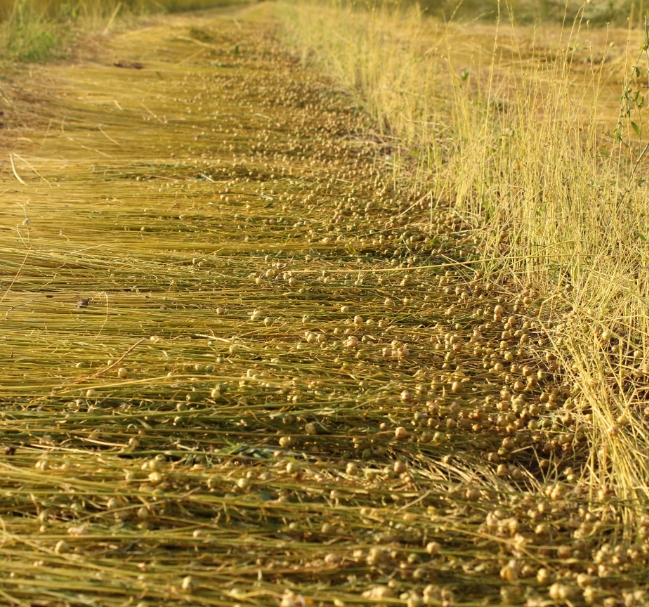Flax Fibre

About
Flax fibres are amongst the oldest fibre crops in the world. Flax fiber is extracted from the bast or skin of the stem of the flax plant. Flax fibre is soft, lustrous and flexible, and stronger than cotton fibre, but less elastic. The best grades are used for linen fabrics such as damasks, lace and sheeting. The legendary linen suit is the symbol of breezy summer elegance due to it’s exceptional coolness in hot weather, with the fibre absorbing and releasing humidity quickly.
Flax, also known as common flax or linseed (Binomial name: Linum usitatissimum) is a member of the genus Linum in the family Linaceae. It is native to the region extending from the eastern Mediterranean to India and was probably first domesticated in the Fertile Crescent. Flax was extensively cultivated in ancient Ethiopia and ancient Egypt. A discovery reported in 2009 of spun, dyed, and knotted wild flax fibres in a prehistoric cave in the Republic of Georgia, shows that the plant was already in use by humans from the surprisingly early date of 30,000 B.C. New Zealand flax is not related to flax but was named after it, as both plants are used to produce fibres.
Flax is harvested for fibre production after approximately 100 days, or a month after the plant flowers and two weeks after the seed capsules form. The base of the plant will begin to turn yellow. If the plant is still green the seed will not be useful, and the fibre will be underdeveloped. The fibre degrades once the plant is brown.